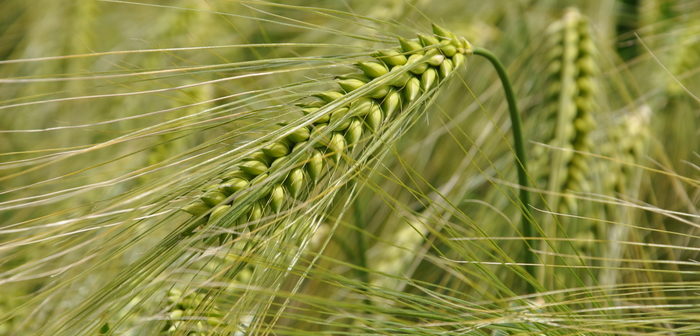As farmers look to make savings on high fertiliser costs, new independent research has shown hybrid barley receiving a reduced dose of nitrogen fertiliser (N) can deliver similar yields to conventional winter barley receiving a higher, standard dose.
Conducted by ADAS, the research compared two hybrid barley varieties and two conventional two-row winter feed barley varieties at N doses from 0 to 360 kg/ha.
The work formed part of a larger programme of Syngenta evaluations into hybrid barley’s benefits that may help growers respond to sustainability challenges – including high fertiliser prices, a need to manage grass weeds sustainably, and a need to produce yields reliably for food security.
Pointing to the N response experiment findings, ADAS project director, Dr Sarah Kendall, says at 200 kg N/ha – a dose potentially used if pushing winter feed barley for yield – both hybrids significantly outyielded their conventional counterparts, producing 9.92 and 9.71 t/ha versus 8.19 and 8.13 t/ha for the conventional varieties. Dose response curves revealed a similar trend at a more standard 180 kg N/ha, but what was also relevant was the economic optimum N rate for the varieties, Dr Kendall adds.

Dr Sarah Kendall
“Using a standard breakeven ratio for N fertiliser of 5:1, the data analysis revealed the hybrids required in the region of 65 kg/ha less N to achieve a similar yield to one of the conventional varieties,” says Dr Kendall.
“The second conventional variety had an economic optimum N rate lower than the hybrids, but yielded around 1.0 t/ha less. These results should provide a level of confidence to growers who are looking to make modest reductions in their N rates with hybrid barley in response to cost and sustainability pressures.”
Improved N utilisation efficiency
Across a wide range of N rates in the trial, the hybrids also showed improved N utilisation efficiency over the conventional varieties, reports Dr Kendall, indicating that for the same amount of N taken up by the crop, the hybrids produced more yield.
According to Syngenta seeds technical expert, Ben Urquhart, these exciting results could aid growers’ variety decisions thisautumn – with the ability to apply less N while maintaining barley yield not only offering financial savings given high fertiliser prices, but also potential environmental benefits from a reduced carbon footprint. Further work in Germany has also shown hybrid barley to produce a yield benefit over conventional barley with reduced N, he adds.
“Hybrid barley is known for hybrid vigour and vigorous roots are associated with improved nutrient uptake,” says Mr Urquhart. “But hybrid vigour is also associated with another benefit of hybrid barley: its ability to suppress certain grass weeds, which is another area of sustainability we have been researching. For example, vigorous roots compete with black-grass roots.
“Following early trials that showed hybrid barley to be more competitive than winter wheat against black-grass, more recent work has also shown hybrid barley to be more competitive against ryegrass and brome species – over and above winter wheat but also conventional two and six-row varieties of winter barley.
“Additionally, trials have pointed to reduced weed seed return to the soil from grass weeds surviving in hybrid barley. This is a key part of sustainable grass weed reduction. However, there are also shorter-terms benefits, and latest calculations reveal the yield benefit alone from black-grass suppression with hybrid barley could be worth more than £50/ha.”
Even where grass weeds are not present, hybrid barley has long been recognised for high yields, says Syngenta hybrid barley marketing manager, Sarah Hughes, but recent breeding improvements have also seen the mean specific weight of hybrid barleys accelerate sharply on the AHDB Recommended List.
“High and consistent yields, good grain quality, fewer grass weeds and efficient use of fertiliser are all key targets to help farm more sustainably,” Mrs Hughes adds.
Example hybrid barley benefits
- High and stable yields
- Improved specific weight
- Competitive against various grass weeds
- Efficient nitrogen utilisation
- Early harvest for early cashflow and an entry into winter oilseed rape
- Potential income from straw
- Alternative to second wheat in a take-all situation




